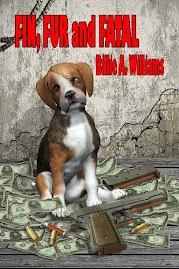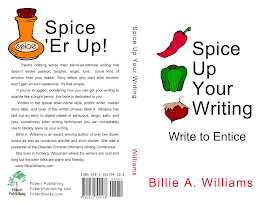
Story Worth Telling – part II
Story worth telling – “Always relates more to the inner psychology of the protagonist and has to be big enough, dramatic enough to change the protagonist’s world and force him on a journey of change.” Les Edgerton
All story problems, twists and turns, dialog and movement is movement toward alleviating or fixing this story-worth-telling main problem. The resolution of the surface problem (your twists and turns) contribute to the resolution of the main story problem, but don't solve it. You need more than a reversal of fortune or circumstances to create a story-worth-telling.
To figure out what lies beneath the surface problem of your character, put yourself in your two year olds mind and incessantly ask, as s/he would, WHY?
It’s rather like saying you want a million dollars. Okay, someone brings you a dump truck load of green. A million dollars worth of green. Now you should be content. You can roll in that pile of money, count it, stack it, burn it if you like. Are you happy? Does it make you happy to have a room full of money? NO? Well then, HAVING a million dollars wasn’t really your goal at all. Perhaps it was the prestige of telling people you have a million dollars. So you put on your ragged jeans and sweat shirt and those scruffy old tennis shoes you’ve been hoping to replace someday. Now you set out to brag to the world about your roomful of money. What do you mean that still doesn’t make you happy? Why? What did you really want?
Oh, you want to spend it? What you
really wanted was all the stuff you could buy or have, all the people you could help by donating some of it, and the list goes on. Then your surface problem was wanting the money to increase your wealth, but the story-worth-telling problem or the real goal of your want was what the money could do for you — that is the real why.
Another way to determine the story worth telling goal versus the surface goal or problem is to take a mental snapshot of it. If it can be framed in a picture— you or your character with a fistful of money – or rolling around in a room full of money—that’s a surface problem. You can not snap a picture of your self-respect, a worry free existence, peace of mind or caring and giving from your heart—that is your story-worth-telling goal. Keep asking until you unravel what it is your character REALLY wants and WHY.
In Evan Marshall’s book
The Marshall Plan for Novel Writing he furnishes you with a form that you fill out for your point of view characters (POV) for each scene. That form consists of a series of questions to ask about your character and his circumstances. For instance, Who is in the scene with him, what is your character’s scene goal, who or what opposes your character as he tries to reach this goal? What does your character want at this point in your story? You have already given him a story goal (the story-worth-telling goal) so this is an action to circumvent, plow through or correct a surface problem moving him one step closer to the real goal—the story-worth-telling solution or resolution.
At the end of this form, you set a new goal for your character because while he did not resolve the main story-worth-telling goal, he lost this tussle to get what he really wanted. It sets him on a new path with a renewed resolve and a new mini-goal. (*Unless of course he’s the villain because the villain wins in every scene he’s POV character in —until the end that is.)
Story surface problems must arise from within, from the story-worth-telling problem. It cannot come out of the clear blue ether having neither connection to the story-worth-telling main problem, nor some connection to the story whole. Every new surface problem arises out of the last problem.
*Your antagonist needs an equally compelling and honorable, at least in his mind, story goal. He must want something with the same passion as your protagonist. The two characters must be equally matched. The protagonist is capable of winning her goal over the antagonist’s winning his goal.
So where do you find these Story-worth-telling goals and problems? Your own personal demons—mine them when you are looking for story ideas. What makes you cringe, what turns your stomach or ties it in knots, brings you your greatest joy, causes you to turn red in anger—think about them. Write them down and also write down what physical manifestation they cause in you. You will be well on your way to create a compelling break out novel.
Billie A. WilliamsWrite Like The Wind,
www.billiewilliams.comaccidental sleuths solving crimes
with wit, wisdom and chutzpah



























